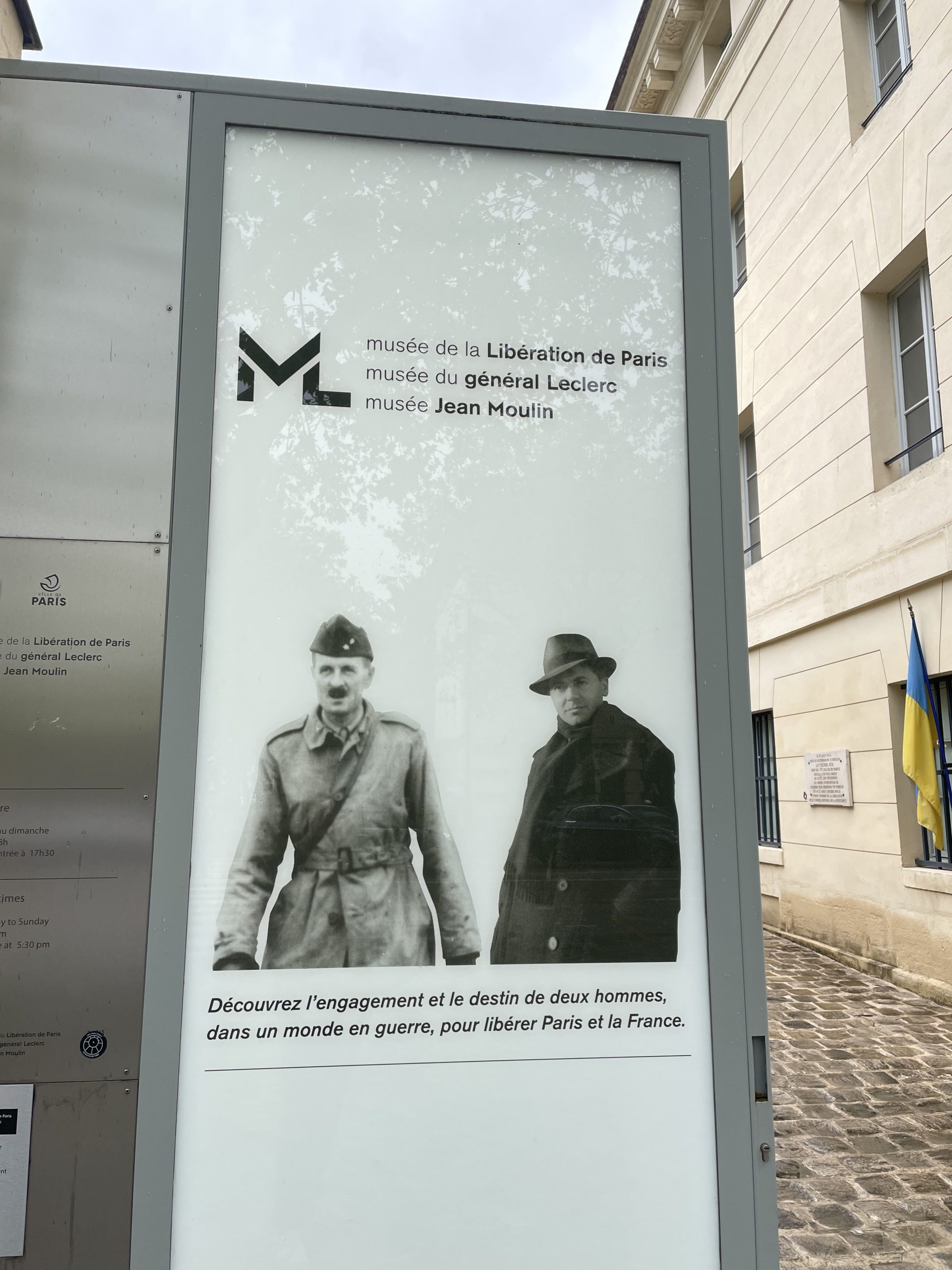
“Why don’t more people know about this place?” I left the Museum of the Liberation of Paris my mind racing in a dozen directions. In a week full of surprises, it was another moment of encountering the unexpected in Paris. Across the other side of Place Denfert-Rochereau, the same long line of umbrellas inched along a tall stone wall as people waited to enter the catacombs. Back in the museum, I had many exhibits to myself once a local high school group had passed through (although I was also happy to be on their fringes listening to their dynamic teacher).
Don’t get me wrong. The catacombs are fascinating. And the two sites are entirely different experiences undertaken for different reasons. Perhaps on another day the museum would be more full and the catacombs less popular. But a version of the scene at Denfert-Rochereau was one that would play out many times throughout my trip, and one I would lament over with a Parisian colleague who had just finished his seventh Louvre tour that week. We travellers say we like to get off the proverbial beaten path much more than we actually do it.
This May, I was on a mission to help Classical Pursuits travellers actually do it. I had travelled to France to meet with partners and work on logistics for our upcoming tour Art and Resistance in Paris and Champagne.
I embarked on my trip in a practical, no-nonsense frame of mind. Sure, I always loved being in France. I was looking forward to visiting new places in Champagne. But I had meetings to take, sites to visit, transit routes to test. I would check my boxes, enjoy some good food and wine as a bonus, and go home.
As essential as this work is to the creation of a tour, it turned out to be less important than my own unexpected delight in realizing anew that even in Paris, the most visited city in the world, there is discovery in the familiar.
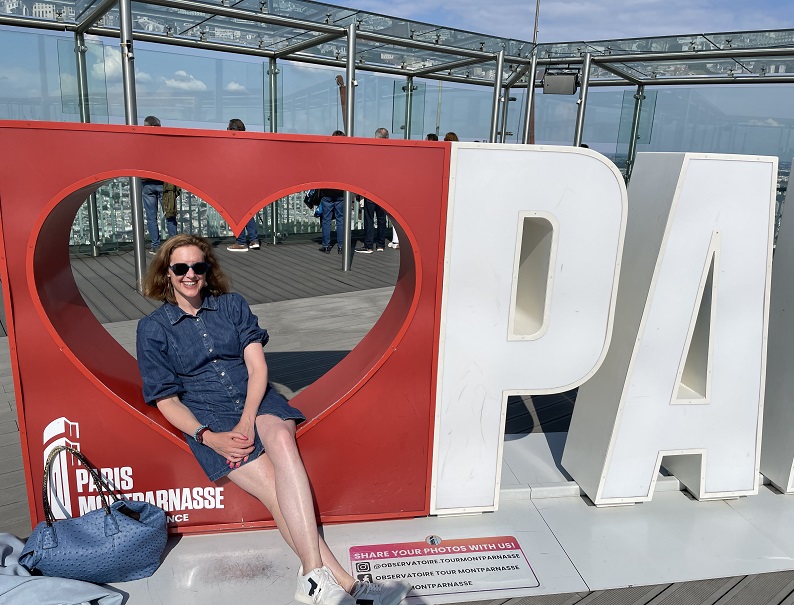
This feeling first took hold when I changed my perspective in Montparnasse in a very literal way. As a teaching assistant at a high school in Normandy, I had spent many an hour walking around the neighbourhood while I waited for the train to take me from the Gare de Montparnasse back to the small city where I lived. It’s where the hotel we use for Classical Pursuits tours is located, and I knew its shops, pharmacies, post offices, movie theatres and cafés. Montparnasse was my home base in Paris, as far as I had one.
On this trip, a friend treated me to a visit to the top of the Tour Montparnasse. Orders of magnitude less crowded than the Eiffel Tower, it offered a terrace with a relaxed vibe and extraordinary views. We picked out familiar landmarks, and my friend pointed to the cluster of high-rise apartments near the Place d’Italie he had grown up in. As I studied the streets and buildings between the tower and Mathieu’s childhood home, it struck me that there were large swathes of Montparnasse I did not know at all. This realization was exhilarating. What other unknowns lay ahead?
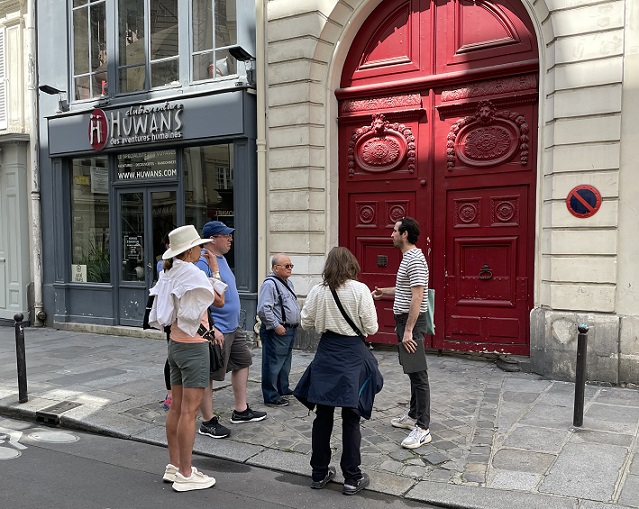
I had my answer the next day on a walking tour of WWII history in Paris. My aim in booking this tour had been to fill in gaps in my knowledge and immerse myself in the history we’ll be focusing on for our upcoming Classical Pursuits tour. But from the first moments of the meeting the guide and the rest of the group, I knew I was in for a much higher order of experience. Our guide Samuél’s deep knowledge of history and sociology, and true curiosity about people in their greatest, weakest, and most ordinary moments, transformed the Left Bank streets that at other times had seemed so familiar to me. Among our group of history buffs was a retired professor of military history who was an expert in imperial and Soviet Russia. Both Samuél and the group peppered him with questions, creating a lively interchange that was a true moveable feast.
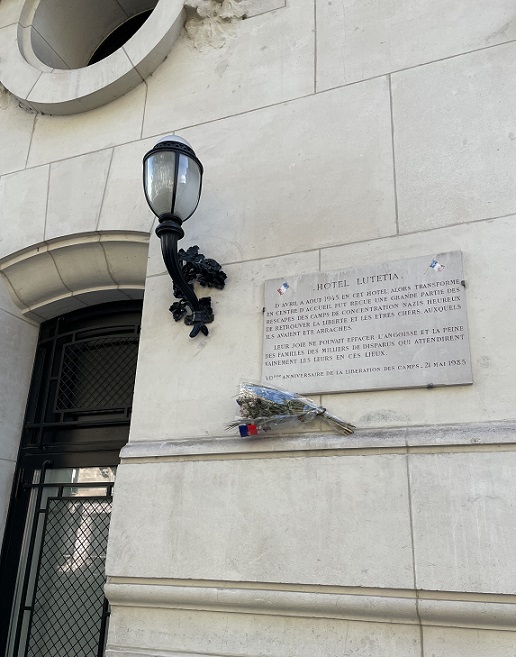
At the end of the walk, as we stood in the shadow of Notre-Dame, Samuél pointed out that our group was probably the only one that day standing by the cathedral but looking across the river Seine in the direction of the Hôtel de Ville, Paris’s city hall. The picture-taking crowds faded away and a new scene took place as Samuél described the street fighting of late August 1944 and evoked the fear, uncertainty and excitement of those days.
As we went our separate ways I felt more connected than ever before to the two animating ideas behind Classical Pursuits tours: the power of a theme to reveal the many layers and nuances of even the most familiar places; and the deep satisfaction that comes from combining your own discoveries with the experiences of others.
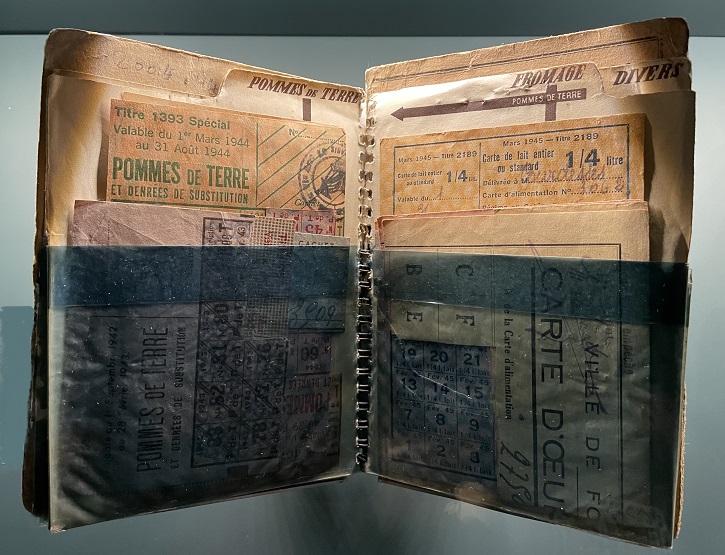
Later, back in Montparnasse, the multimedia exhibits at the Museum of the Liberation and the discussions between the student visitors echoed the questions our group had posed on my walking tour: How did Parisians navigate the daily dangers and hardships of occupation? What were the motivations for collaboration, resistance, or something in between? How can we, 80 years later, let go of received ideas? How can we understand history—and therefore ourselves—more fully?
Join me and our team of specialist guides in May 2025 for Art and Resistance in Paris and Champagne. Travelling with us is special guest Bryn Turnbull, bestselling author of The Paris Deception.
